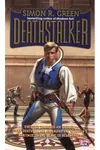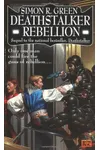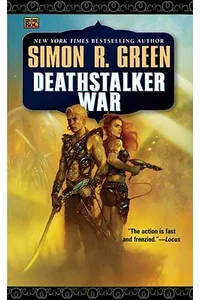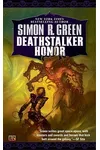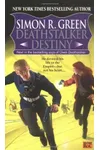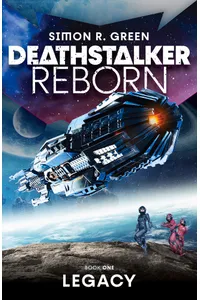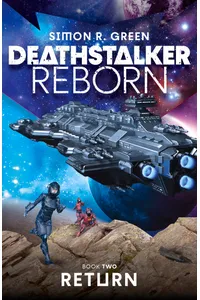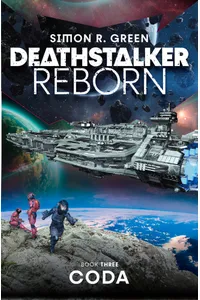Step into the thrilling world of Deathstalker, where galactic rebellions, sharp-witted heroes, and a tongue-in-cheek take on space opera collide! Simon R. Green’s Deathstalker series is an eight-book science fiction epic that follows Owen Deathstalker, a reluctant aristocrat turned rebel leader, as he battles a tyrannical empire. Packed with action, humor, and unforgettable characters, this series is a wild ride for fans of pulpy, over-the-top adventures.
Blending the grandeur of Star Wars with the gritty satire of classic 1950s space operas, Deathstalker offers a universe brimming with corrupt empresses, rogue AIs, and swashbuckling heroes. Whether you’re drawn to epic battles or dark humor, this series delivers a sprawling saga that’s as entertaining as it is ambitious.
How Deathstalker Began
Simon R. Green, a British author with a knack for blending genres, launched the Deathstalker series in 1995 after drawing inspiration from watching Casablanca and Star Wars in one sitting. He wondered: what if a lone rebel, without vast resources, sparked a galactic uprising? Thus, Owen Deathstalker was born—a historian thrust into a destiny he didn’t choose. Green’s love for Leigh Brackett’s classic space operas shaped the series’ flamboyant style, infusing it with satire and a playful disregard for convention.
Published during the 1990s and early 2000s, the series grew into a cult favorite, appealing to readers who craved fast-paced narratives and larger-than-life characters. Green’s prolific career, including his Nightside and Hawk & Fisher series, cemented his reputation for crafting addictive, genre-bending tales.
The Heart of Deathstalker
The series kicks off with Deathstalker (1995), where Owen, outlawed by the psychotic Empress Lionstone XIV, assembles a ragtag crew—including a pirate, a cyborg, and a bounty hunter—to find the Darkvoid Device, a weapon that could topple the empire. Deathstalker Rebellion (1996) ramps up the stakes as Owen unites rebels, clones, and espers against the empire’s iron grip. Deathstalker War (1997) brings the fight to the empire’s core on Golgotha, with bloody battles and betrayals galore. Later, Deathstalker Legacy (2002) shifts to Lewis Deathstalker, Owen’s descendant, navigating a new era of chaos 200 years later.
Themes of honor, courage, and rebellion pulse through the series, wrapped in a satirical lens that pokes fun at dictatorship, aristocracy, and media hype. Set in a decadent far-future empire, the universe teems with alien threats, rogue AIs like Shub, and psychic espers fighting for freedom. Green’s style is unapologetically bold—think epic sword fights mixed with laser battles, all laced with dark humor and witty banter.
The series’ sprawling cast, from the cunning Valentine Wolfe to the legendary Jack Random, adds depth and unpredictability. While some criticize its “kitchen sink” approach, fans adore its chaotic energy, likening it to a caramel apple: mostly sweet, with a touch of substance.
Why Deathstalker Resonates
Deathstalker’s blend of parody and heartfelt heroism has carved a niche among space opera fans. Its over-the-top action and satirical edge make it a refreshing antidote to more serious sci-fi epics. Readers on platforms like Reddit praise its addictive quality, with some calling it a “Guardians of the Galaxy-esque” romp that rekindled their love for reading. Its influence lies in its fearless embrace of excess, inspiring writers to lean into genre tropes with a wink.
Though not a literary heavyweight, the series’ cult status endures, fueled by its emotional depth and sheer fun. For those seeking an escape into a universe where heroes defy impossible odds, Deathstalker delivers.
- Publication Years: 1995–2005
- Number of Books: 8 main novels, plus 3 prequel novellas
- Genre: Space opera, science fiction, fantasy
Grab Deathstalker and dive into Simon R. Green’s wild, witty galaxy—where rebellion is just the beginning!
